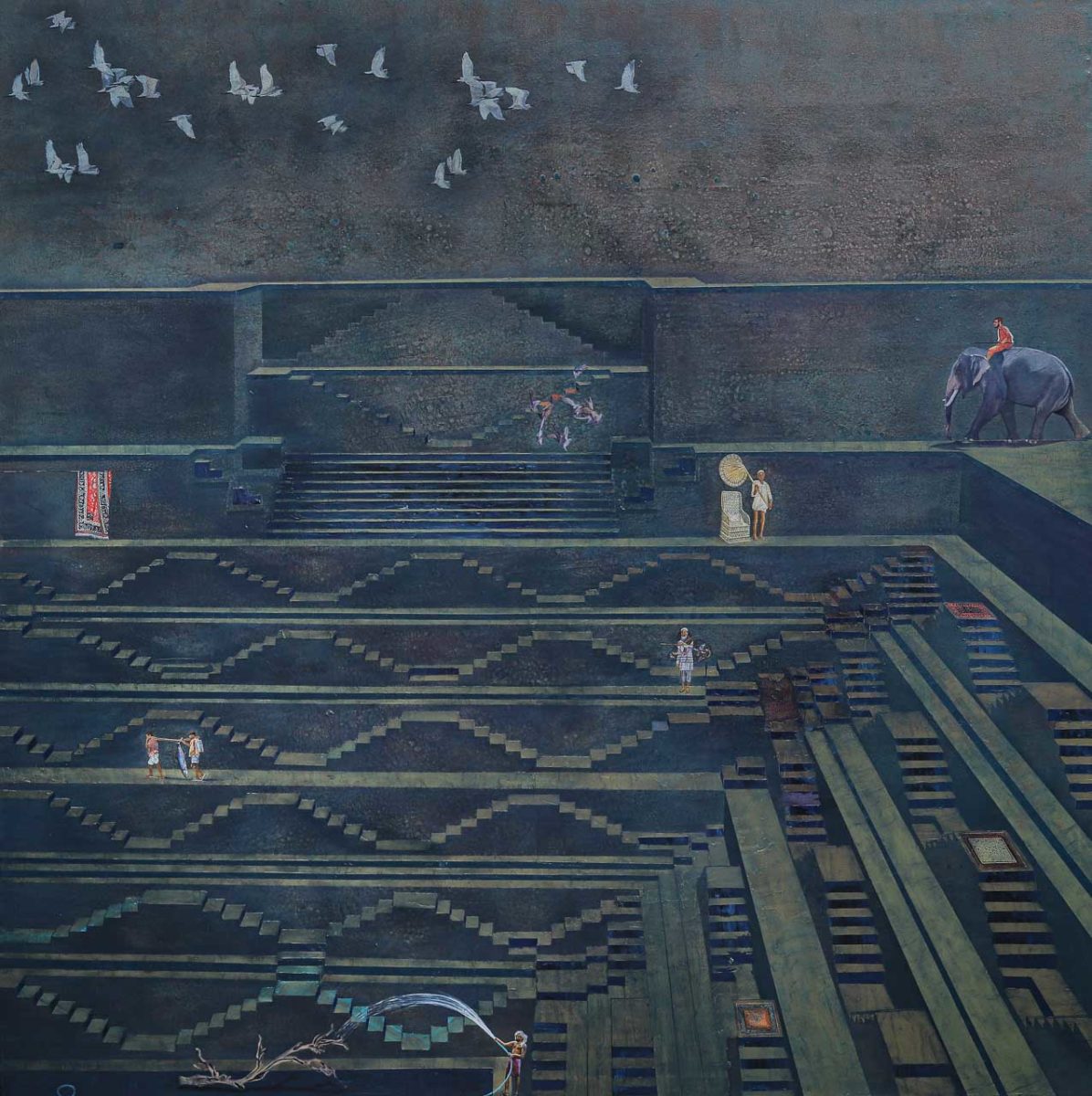Contemporary artist Charanjeet Singh’s creations echo the whispers of history and beckon us to ponder the importance of water conservation. He is a modern-day alchemist of aesthetics, draws inspiration from the ancient step wells of India and seamlessly weaves them into the rich tapestry of inspirations from Mughal miniature paintings. Through his evocative works, he imparts a crucial message about the conservation of water and the timeless lessons that history holds for our present and future.
The artist’s journey begins with a fascination for the step wells that dot the arid landscapes of India. These architectural marvels, also known as Baolis or Bawdis, have served as vital sources of water for centuries, embodying the ingenious engineering and cultural significance of their time. The step wells, with their intricate steps leading down to the water source, became veritable oases, not just quenching the physical thirst of communities but also nurturing a deeper, spiritual connection with water.
Through a meticulous study of these step wells, the artist becomes a storyteller, narrating the tales of resilience etched in the stone steps and the silent echoes of history that reverberate within their depths. The step wells, with their symbiotic relationship with the surrounding environment, become a metaphor for the delicate equilibrium between human existence and nature.

Singh intertwines the soul of step wells with the intricate beauty of Mughal miniature paintings. Mughal art, characterized by its meticulous detailing and exquisite color palette, finds an unexpected companion in the stoic grandeur of step wells. The marriage of these two seemingly disparate elements births a visual narrative that transcends temporal boundaries.
The artist includes the delicate elements of Mughal miniatures to embellish the stone canvases of step wells, creating a dialogue between the historical narratives embedded in both forms of art. The miniatures, traditionally depicting scenes from courtly life, now find new life as they grace the walls of step wells, narrating a story of coexistence, harmony, and the intrinsic value of water.
At the heart of the Charanjeet’s creations lies a powerful message – the urgent need for water conservation. Through his juxtaposition of step wells and Mughal miniatures, he draws attention to the historical wisdom encapsulated in these structures. The step wells, born out of necessity in ancient times, offer a blueprint for sustainable water management, a lesson that resonates across the ages.
The artist’s choice to integrate Mughal miniature elements serves a dual purpose – it not only infuses a timeless aesthetic into the narrative but also underlines the continuity of the message. The Mughal era, despite its opulence, recognized the value of nature and water, a lesson the contemporary world can ill-afford to ignore. Through this artistic synthesis, the artist invites us to reevaluate our relationship with water and learn from the pages of history.
In the hands of Singh, the step wells of India and the inspired elements of Mughal miniatures converge into a visual symphony that speaks to our collective consciousness. Through this artistic journey, the conservation of water emerges not as a mere slogan but as an urgent call to action echoing through the corridors of time. As we immerse ourselves in the vivid hues and profound depths of these creations, we are prompted to reflect on the interplay of history, art, and the vital element that sustains life – water. The artist’s canvas becomes a portal, transporting us to an era where the wisdom of the past intertwines with the urgency of the present, offering us a profound lesson in the art of conservation.
Essay used with permission from art dose